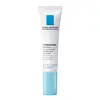What's inside
What's inside
 Key Ingredients
Key Ingredients

 Benefits
Benefits

 Concerns
Concerns

 Ingredients Side-by-side
Ingredients Side-by-side

Water
Skin ConditioningGlycerin
HumectantCarbomer
Emulsion StabilisingGlycine Soja Protein
EmulsifyingCaffeine
Skin ConditioningIsohexadecane
EmollientSodium Cocoyl Glutamate
CleansingSodium Hyaluronate
HumectantSodium Hydroxide
BufferingDisodium EDTA
Hydrolyzed Hyaluronic Acid
HumectantCaprylyl Glycol
EmollientPolysorbate 80
EmulsifyingAcrylamide/Sodium Acryloyldimethyltaurate Copolymer
Emulsion StabilisingPotassium Sorbate
PreservativeSodium Benzoate
MaskingWater, Glycerin, Carbomer, Glycine Soja Protein, Caffeine, Isohexadecane, Sodium Cocoyl Glutamate, Sodium Hyaluronate, Sodium Hydroxide, Disodium EDTA, Hydrolyzed Hyaluronic Acid, Caprylyl Glycol, Polysorbate 80, Acrylamide/Sodium Acryloyldimethyltaurate Copolymer, Potassium Sorbate, Sodium Benzoate
Water
Skin ConditioningPropanediol
SolventGlycerin
HumectantMyristyl Nicotinate
Skin ConditioningDimethicone
EmollientPullulan
Maris Aqua
HumectantC12-15 Alkyl Benzoate
AntimicrobialDextrin
AbsorbentPalmitoyl Tetrapeptide-7
Skin ConditioningNicotiana Benthamiana Octapeptide-30 Sh-Oligopeptide-2
Skin ConditioningDipeptide-2
Skin ConditioningCaffeine
Skin ConditioningTerminalia Ferdinandiana Fruit Extract
AntioxidantHydrolyzed Rhodophyceae Extract
Nannochloropsis Oculata Extract
HumectantPerilla Ocymoides Leaf Extract
Tonic1,2-Hexanediol
Skin ConditioningPhospholipids
Skin ConditioningSodium Acrylates Copolymer
Bacillus Ferment
Skin ConditioningSilica
AbrasivePolymethyl Methacrylate
Polyglyceryl-10 Stearate
Skin ConditioningHydrogenated Polydecene
EmollientSteareth-20
CleansingAdenosine
Skin ConditioningAloe Barbadensis Leaf Juice
Skin ConditioningHelianthus Annuus Seed Oil
EmollientTetrasodium Glutamate Diacetate
Hesperidin Methyl Chalcone
AntioxidantButylene Glycol
HumectantCaprylhydroxamic Acid
Chlorhexidine Digluconate
AntimicrobialGlyceryl Caprylate
EmollientTocopherol
AntioxidantEthylhexylglycerin
Skin ConditioningXanthan Gum
EmulsifyingMica
Cosmetic ColorantCitric Acid
BufferingPhenoxyethanol
PreservativeSodium Citrate
BufferingBenzoic Acid
MaskingSodium Benzoate
MaskingPotassium Sorbate
PreservativeSodium Hydroxide
BufferingCI 77891
Cosmetic ColorantWater, Propanediol, Glycerin, Myristyl Nicotinate, Dimethicone, Pullulan, Maris Aqua, C12-15 Alkyl Benzoate, Dextrin, Palmitoyl Tetrapeptide-7, Nicotiana Benthamiana Octapeptide-30 Sh-Oligopeptide-2, Dipeptide-2, Caffeine, Terminalia Ferdinandiana Fruit Extract, Hydrolyzed Rhodophyceae Extract, Nannochloropsis Oculata Extract, Perilla Ocymoides Leaf Extract, 1,2-Hexanediol, Phospholipids, Sodium Acrylates Copolymer, Bacillus Ferment, Silica, Polymethyl Methacrylate, Polyglyceryl-10 Stearate, Hydrogenated Polydecene, Steareth-20, Adenosine, Aloe Barbadensis Leaf Juice, Helianthus Annuus Seed Oil, Tetrasodium Glutamate Diacetate, Hesperidin Methyl Chalcone, Butylene Glycol, Caprylhydroxamic Acid, Chlorhexidine Digluconate, Glyceryl Caprylate, Tocopherol, Ethylhexylglycerin, Xanthan Gum, Mica, Citric Acid, Phenoxyethanol, Sodium Citrate, Benzoic Acid, Sodium Benzoate, Potassium Sorbate, Sodium Hydroxide, CI 77891
Ingredients Explained
These ingredients are found in both products.
Ingredients higher up in an ingredient list are typically present in a larger amount.
Caffeine is most associated with coffee, tea, and cacao. In skincare, it helps with calming inflammation and is rich in antioxidants.
While caffeine is used to treat cellulite and and dark circles, further studies are needed to prove this. It has been believed to help with these skin conditions due to its ability to dilate blood vessels and increase blood flow.
Some studies are looking into caffeine's ability to protect against UV rays.
Learn more about CaffeineGlycerin is already naturally found in your skin. It helps moisturize and protect your skin.
A study from 2016 found glycerin to be more effective as a humectant than AHAs and hyaluronic acid.
As a humectant, it helps the skin stay hydrated by pulling moisture to your skin. The low molecular weight of glycerin allows it to pull moisture into the deeper layers of your skin.
Hydrated skin improves your skin barrier; Your skin barrier helps protect against irritants and bacteria.
Glycerin has also been found to have antimicrobial and antiviral properties. Due to these properties, glycerin is often used in wound and burn treatments.
In cosmetics, glycerin is usually derived from plants such as soybean or palm. However, it can also be sourced from animals, such as tallow or animal fat.
This ingredient is organic, colorless, odorless, and non-toxic.
Glycerin is the name for this ingredient in American English. British English uses Glycerol/Glycerine.
Learn more about GlycerinPotassium Sorbate is a preservative used to prevent yeast and mold in products. It is commonly found in both cosmetic and food products.
This ingredient comes from potassium salt derived from sorbic acid. Sorbic acid is a natural antibiotic and effective against fungus.
Both potassium sorbate and sorbic acid can be found in baked goods, cheeses, dried meats, dried fruit, ice cream, pickles, wine, yogurt, and more.
You'll often find this ingredient used with other preservatives.
Learn more about Potassium SorbateSodium Benzoate is a preservative. It's used in both cosmetic and food products to inhibit the growth of mold and bacteria. It is typically produced synthetically.
Both the US FDA and EU Health Committee have approved the use of sodium benzoate. In the US, levels of 0.1% (of the total product) are allowed.
Sodium benzoate works as a preservative by inhibiting the growth of bacteria inside of cells. It prevents the cell from fermenting a type of sugar using an enzyme called phosphofructokinase.
It is the salt of benzoic acid. Foods containing sodium benzoate include soda, salad dressings, condiments, fruit juices, wines, and snack foods.
Studies for using ascorbic acid and sodium benzoate in cosmetics are lacking, especially in skincare routines with multiple steps.
We always recommend speaking with a professional, such as a dermatologist, if you have any concerns.
Learn more about Sodium BenzoateSodium Hydroxide is also known as lye or caustic soda. It is used to adjust the pH of products; many ingredients require a specific pH to be effective.
In small amounts, sodium hydroxide is considered safe to use. However, large amounts may cause chemical burns due to its high alkaline.
Your skin has a natural pH and acid mantle. This acid mantle helps prevent harmful bacteria from breaking through. The acid mantle also helps keep your skin hydrated.
"Alkaline" refers to a high pH level. A low pH level would be considered acidic.
Learn more about Sodium HydroxideWater. It's the most common cosmetic ingredient of all. You'll usually see it at the top of ingredient lists, meaning that it makes up the largest part of the product.
So why is it so popular? Water most often acts as a solvent - this means that it helps dissolve other ingredients into the formulation.
You'll also recognize water as that liquid we all need to stay alive. If you see this, drink a glass of water. Stay hydrated!
Learn more about Water